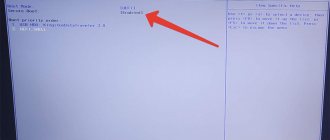Modern phones have long ceased to be ordinary devices for making calls.
Now you can use mobile resources to find useful information on the Internet, take high-quality photos, play various applications, listen to music and watch your favorite movies. The icing on the cake is the built-in navigation system, which allows you to use your smartphone as a GPS navigator, for example, to determine your location in the forest, on a walk or while traveling. All the details are below.
What is a GPS navigator in a smartphone?
GPS in a phone is a navigation system that is designed to determine the location of the device on the map, as well as to build a route and search for objects necessary for the user. Absolutely every modern smartphone has a built-in navigation module. The small device is an antenna, which is located in the inside of the case.
Initially, this device was intended to determine the location of enemies in military conflicts. However, over time, when mobile technologies began to develop so dynamically, the navigation signal became available to everyone in everyday life. This module is capable of receiving signals from supported antennas, but it is not capable of transmitting information. When a certain signal arrives in the smartphone, the user sees his position on the map.
The navigation system in a mobile phone has long gained wide popularity. This function is very useful for people who constantly travel or are on endless trips, business trips, etc. A GPS navigator plays a particularly important role in densely populated areas.
Now many social services, couriers, taxi drivers and food delivery people cannot imagine their life without a mobile navigator. Also, smartphones with a built-in GPS module are widely in demand among hunters and fishermen. For the latter, there are special applications in the official Play Market store with a user-friendly interface and useful tools.
How does GPS work?
To determine the position and time of almost any place on Earth, an orbital constellation and ground stations are used. At an altitude of more than 19 thousand km above the Earth, at least 24 active satellites are constantly deployed. Their positions are calculated in such a way that exactly half of them are always in the sky above any point on the planet. The main purpose of satellites is to transmit information to Earth at frequencies in the range of 1.1–1.5 GHz. Using this data and mathematical calculations, a ground receiver or GPS module can calculate its location and current time.
In 2010, the alternative global positioning system GLONASS was restored. It also has 24 satellites and broadcasts at frequencies of 1.2–1.6 GHz.
Functional Features
As a rule, the navigation system functions more stably in an area that does not contain a large number of multi-story buildings and other structures. Most smartphones have poor signal reception indoors, as thick concrete walls reflect the signal, acting as a blocking screen. However, some devices belonging to a more expensive price segment cope with their task in the most severe conditions.
Pedestrians and drivers who are far from populated areas should be aware of possible system failures during bad weather conditions. The problem is that high humidity and gusts of wind distort the transmitted signal, as a result of which location coordinates can be displayed with large errors.
The overwhelming number of GPS navigators in mobile phones have the following features:
Both options are completely free and easy to use. If your phone does not have the necessary software, you can use the official Google Market store to download it. It is also worth noting that these navigators ideally cope with the assigned tasks in any conditions, be it a densely populated city or rural area.
The greatest productivity can be achieved if the user installs an online and offline navigator on his smartphone. If you lose connection or use up mobile traffic, you can switch to the latter mode at any time. As for offline navigators, more details about their capabilities can be found below.
Are there any disadvantages to GPS?
There are no disadvantages to GPS as such, but it is worth remembering that the location may not always be reliable, as there are limits of error. For more accurate positioning, you can use both navigation systems at once - GPS and GLONASS, especially since they are both used in many devices.
Otherwise, GPS has solid advantages. In addition, the system actually has no effect on the cost of the device, which you can see in the cost of smartphones: even the most inexpensive devices are equipped with GPS.
Navigators in offline mode (without the Internet)
The main difference between such systems is that the entire database and maps of the area are stored in the internal memory of the mobile phone. Consequently, such applications take up more space than online options. In any case, to reload the missing elements, you will need to periodically connect to the Internet, but this is not necessary on an ongoing basis.
Offline systems are convenient to use when the owner of the device is far from a populated area and does not have access to the network. In this case, you can save money on purchasing traffic. But most of these programs have paid access. Of course, you can get acquainted with the basic tools in the trial version, but this period will not exceed 7 days.
The most common options are the Maps.ME, Navitel and TomTom applications. They function stably in any area, the main thing is timely downloaded maps and database.
Geopositioning accuracy
The measurement uncertainty of a GPS or GLONASS receiver depends on a number of variables, most notably the signal-to-noise ratio, satellite position, weather conditions, and the presence of obstacles such as buildings and mountains. These factors may create errors in calculating the user's location. Noise typically creates an error of 1 to 10 m. Mountains, buildings and other objects that may obstruct the signal from the satellite can cause an error up to 3 times larger. For normal operation, the GPS receiver must be able to receive signals from 4 satellites. Communication with the first of them allows you to obtain data about the almanac and, therefore, the availability of the others. Although it is possible to determine a location with fewer than 4 satellites, the measurement error can be quite large. The most accurate position determination occurs when there is an open view of a clear sky, free of any obstructions, with more than 4 satellites overhead. Several tools have been created to combat these errors.
Installing third-party navigation applications
Most smartphones have integrated navigation services Yandex.Navigator and Google maps. They are completely free and easy to use. However, what if your phone does not provide this feature? The only way out is to install third-party software. This type of program operates by positioning satellites in real time or thanks to pre-loaded maps of the area. Of course, the first option is considered more effective, but such applications have paid access.
To benefit from useful tools and ensure comfort while traveling on the road, you should choose the following navigation systems:
A bit of GPS history
The very idea of creating a satellite navigation system was born back in 1957, when the first artificial satellite was launched into space. Scientists who followed his flight noticed an interesting Doppler effect.
When the satellite moved away, the frequency of the received signal it sent decreased, and when it got closer, on the contrary, it became stronger - a delay appeared between sending and receiving the signal. Thus, knowing the exact location/coordinates of at least three, and preferably four, satellites, it becomes possible to find out the exact location of an object on earth from this very delay.
The GPS project was started in 1973 by the US Department of Defense, called the NavStar program. The first navigation satellite was launched in 1978, and the full constellation of 24 satellites became operational in 1993.
Initially, it was intended that only the military would use the system, but civilian use was allowed in 1980. This decree was adopted by US President Ronald Reagan.
Finally
In the near future, most likely, all satellite systems will be united into one, international one. If this happens, then the process of determining geolocation will be much faster and more accurate, due to the fact that there are many satellites, and the navigator will be able to connect immediately to anyone that is within signal reception.
tell friends
Similar posts GLONASS - what it is and how it works
Geolocation - what is it and how does it work?
Gyroscope - what is it, why is it needed and how does it work?
Accelerometer - what is it and how does it work
Comments - 0:
Message formats
GPS data is displayed in different formats via a serial interface. There are standard and non-standard (proprietary) message formats. Almost all GPS receivers output NMEA data. This is a standard for formatting information in strings called sentences. Each one contains different data separated by commas. There are 19 types of such offers in total. Here is an example of an NMEA string received from a receiver that has established communication with a satellite:
$GPGGA,235317.000,4003.9039,N,10512.5793,W,1.08,1.6,1577.9,M,-20.7,M,,0000*5F.
The proposal contains the following information:
- GMT time: 23:53:17;
- latitude: north, 40.039039°;
- longitude: west, 10.5125793°;
- number of satellites: 08;
- altitude: 1577 m.
The data is separated by commas to make it easier to read and analyze by computers and microcontrollers. They are sent to the serial port at an interval called the update rate. Most receivers update this information once per second (i.e., at a rate of 1 Hz), but the best GPS receivers are capable of multiple updates per second. For modern models this value is 5–20 Hz.
Connecting to a computer
An easy way to view NMEA data directly is to use a GPS receiver for your laptop or computer. To create a connection, you only need to power up the geopositioning device and connect the TX output of the external module to the RX input of the computer.
It is also possible to connect a GPS receiver to a USB port. Moreover, it can be powered either from its own source or through a connection to a PC. In the first case, the free line is used to detect the presence of a USB GPS receiver connection to the host. When connected to a computer, power is supplied via the Universal Serial Bus, so no additional power supply is required.
In addition, the Bluetooth GPS receiver provides wireless communication with both a PC and compatible devices from the same manufacturer. This allows the rapid exchange of common data such as routes and waypoints.
After connecting, you need to open the serial terminal program, setting the baud rate equal to the speed of the GPS module. Even if the receiver has not established a connection with the satellite, a stream of NMEA sentences will appear on the screen.











